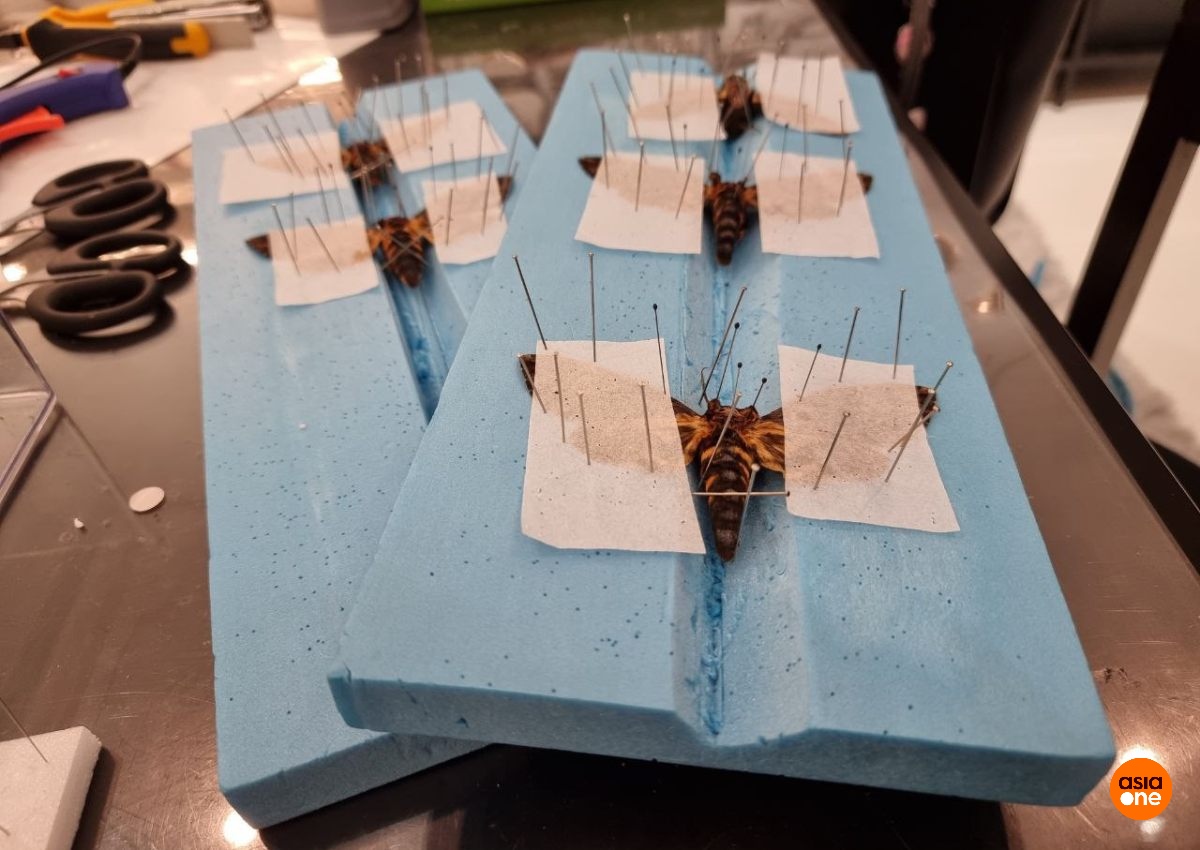'It's not black magic': This animal lover left her laboratory job to be a full-time taxidermist


 PUBLISHED ONFebruary 10, 2022 10:25 AMByKimberly Anne Lim
PUBLISHED ONFebruary 10, 2022 10:25 AMByKimberly Anne LimSome people look at roadkill and see a mangled carcass. Vivian Tham sees art.
The 28-year-old is one of the few taxidermists in Singapore, preserving everything from birds flattened by cars to deceased pets like cats and dogs.
If the word "taxidermy" reminds you of stuffed deer heads mounted on the walls of mountain cabins, you're not alone.
But at Vivian's studio Black Crow Taxidermy, what she does is much more elegant — think butterflies pinned into intricate mandalas, snake skeletons coiled into a lifelike slither and framed up, and fluffy pets that look like they're simply taking a restful nap.
For the zoology graduate and animal lover, taxidermy is all about keeping memories alive and restoring the beauty of dead animals.
Besides preserving pets so their owners don't have to part with them, she also loves incorporating little sentimental touches into her other work. She tells us that she's received requests to add couples' promise rings or flowers from their wedding bouquet into her butterfly domes.
[embed]https://www.instagram.com/p/CXdEQwVvUZh/[/embed]
She explains, "I'm freezing the memories and emotions in time because when you look back, this piece is going to last forever, even after you're gone."
Most of her training stems from her zoology studies and internships at museums. But knowledge of animal anatomy isn't enough. To be a full-fledged taxidermist, you also need a keen artistic sense, an eye for detail and a host of other skills including sewing up skin.
Not to mention lots of time on your hands.
Vivian, who left her job at a private laboratory to set up her studio last year, sheepishly tells us that she can spend up to 15 hours a day at work.
She breaks it down for us — a typical procedure involving a hamster could take her four to five hours just to properly skin the animal. Factor in the subsequent chemical treatments and drying time, and you're looking at around two weeks to complete the whole project.

She works late into the night on most days, but she still has a four- to six-month waiting list for her pet taxidermy services.
Waving a hand towards the back of her studio, she confesses, "Sometimes, when I'm too tired, I have a pillow and blankets here. I just sleep inside!"
"Sometimes I feel I am very, very burnt out because there's only one person making every single thing," Vivian says.
But it's the intangible things like the excitement of her participants when they attend her workshops and a pet owner getting emotional when they receive their furbaby that keeps her going.
"When I see the owner cry, when they bring the pet to me, I'll also cry," she adds.
[embed]https://www.instagram.com/p/CSLsuNZpWXz/[/embed]
Vivian reveals she's always had a soft spot for animals and she'd got an inkling that the science scene wasn't for her when she had to run animal testing projects as part of her studies.
Wincing as she recounts having to euthanise rats for her thesis study, she tells us that she "cried so much".
So when Vivian started taxidermy as a hobby some eight years ago as an artistic outlet, she set a strict set of rules for herself.
She vowed that she would never kill or harm any animal, nor would she taxidermy any endangered or protected species.
And when she gets calls about roadkill, she emphasises that she makes sure to verify the circumstances of the death.
"I know that I don't do [the animals] harm," says Vivian, explaining that her conscience is clear.
"And sometimes before I start, I will tell them, 'I'm helping you and I'm going to make you beautiful again.'"
As with any occupation dealing with death, taboos and misconceptions abound.
While some are simply squeamish at the thought of a carcass, Vivian says some from the older generation seem to think that she's in the business of the dark arts.
She does have a selection of animal skulls — including goat skulls, which are commonly associated with satanism — but she maintains that there's nothing sinister about what she does.
"It's not black magic! In truth, they are just mammals with a skull, and we study the skull. So for me, it's just purely science."
In fact, Vivian says she enjoys imparting her scientific knowledge whenever she can, from impressing the kids in her neighbourhood with preserved caterpillars to dropping fun facts about Singapore's native butterflies in her workshops.

Even as she jokes that she's grown white hair from the stress of maintaining her own business, she concludes, "In the end, when I give back to the public and share my knowledge — I'm not a taker, I'm a giver — it feels like it's worthwhile."
Enjoyed this article? Stay tuned for our upcoming AsiaOne Tries video where host Amanda Chaang tries her hand at making her very own butterfly dome.
kimberlylim@asiaone.com